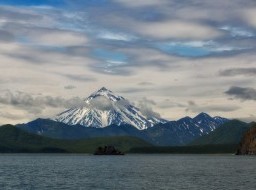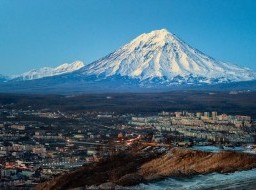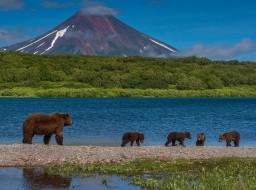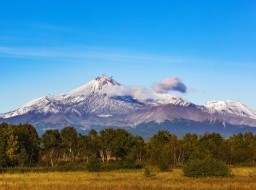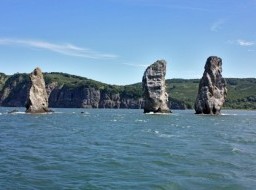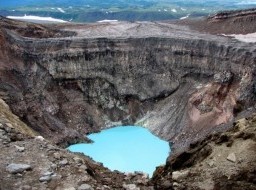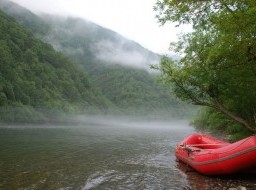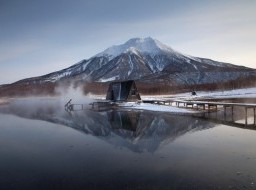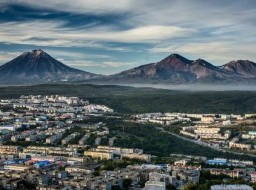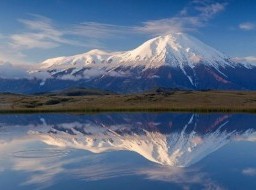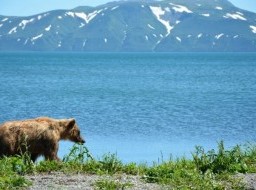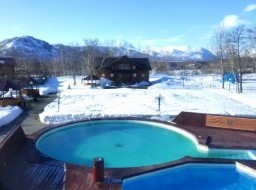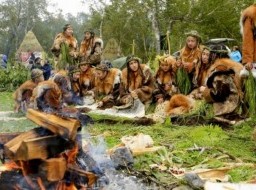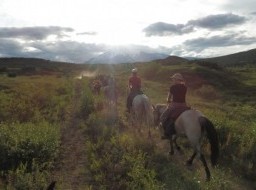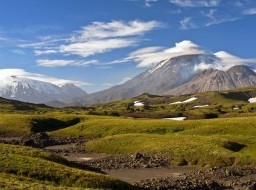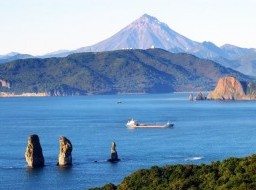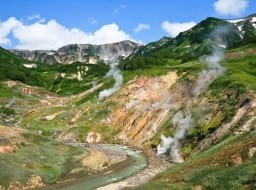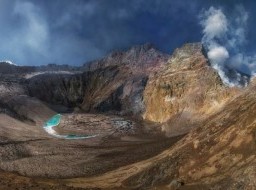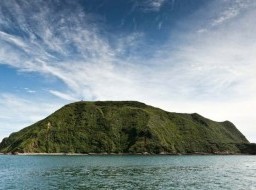Tolbachik volcano
There are two joined volcanoes in the south-west part of the Klyuchevskoye plateau - the active PloskyTolbachik (the Flat Tolbachik) and the extinct OstryTolbachik (the Sharp Tolbachik). They are so close that the sharp top of one volcano towers above the flat top of another one and joins to it. The OstryTolbachik volcano is a stratovolcano with a sharp and iced-coated top. The height of the volcano is 3682 m. The south-east part of the top is the open failure circus. The bottom is covered by glacier and firn snow as well as the west part of the PloskyTolbachik. The Schmidt glacier comes from the circus and descends to the south slopes of the volcano. These slopes are also covered by barrancoes. The west slopes are very destroyed and cut by numerous radial and concentric basalt dykes. The dykes are distinct in relief and present prolonged battlements, fantastic folds, needle-shaped typhons, etc. Its height changes from 3 to 20-30 m. They are interesting both for scientists and for alpinists and tourists. The volcano is extinct. Probably, it was active in the Holocene as well as the PloskyTolbachik. The PloskyTolbachik is almost the same stratovolcano as the OstryTolbachik. It is composed of the interlaid lavas and scoria and is cut by radial dykes. The height of the top is 3085 m. The top is cut off by the 3 km caldera. It is filled by the post-caldera eruptions material, and in the top it is coated by glacier and firn snow, that is why it looks like the table land. Before the eruption of 1975-1976, in the west part of the top there was an active crater with 350 m diameter and 150-180 m depth. During the eruption of 1975, the top of the volcano collapsed and a new crater with 1700-1800 m diameter and 450-500 m depth was formed. There was a blue crater lake and numerous fumaroles in the lowest parts of the steep slopes in the first two years after the eruption and crater formation. Among the active volcanoes of Kamchatka, Tolbachik volcano eruption is different, and is very similar to the Hawaiian bazalt outpourings of lava. The nature of the eruption of such volcanoes - they are more explosive and throws a lot of pyroclastic material (clastic deposits formed during a volcanic eruption: Bombs, slag, pumice, etc.) A chain of cinder cones and fissures stretch from Flat Tolbachik in two main directions - the north-east and south directions. In the 20th century a volcanic eruption occurred only in the southern part, called "Tolbachinskaya valley." Only three eruptions were documented in this area: in 1941, the Great Tolbachik Fissure eruption in 1975-76 , and the eruption in 2012-13, it was named after the 50th Anniversary of the Institute of Volcanology and Seismology in Tolbachik valley. During fissure eruptions cracks openin the crust through which the output goes out in the form of fiery red lava fountains and lava liquid such as water flows for many kilometers. Large cracks of volcanic eruptions, where the volume of lava, ash and slag is more than 1 km3 – is a rare natural phenomenon. In historical time such eruptions were observed seven times. Two of these eruptions occurred in Mexico in 1759-74 and 1943. Two eruptions were in Iceland in 930 and 1783-84. The fifth eruption occurred in 1730-36 on the island of Lanzarote in the Canary archipelago. The sixth and seventh eruption occurred in Kamchatka in 1975-76 and 2012-13 in the area of Tolbachik valley. |

